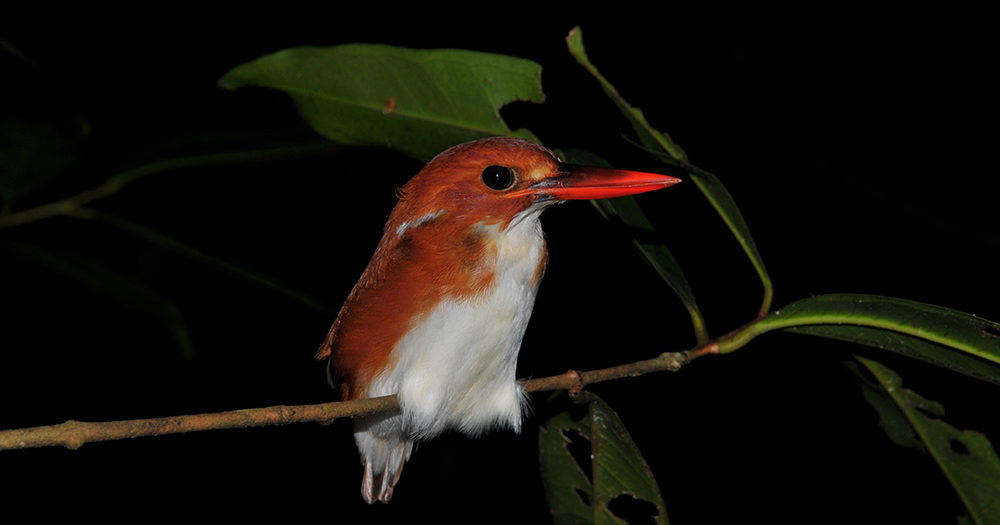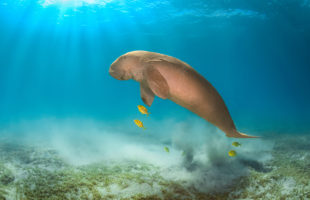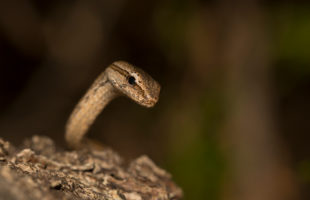Kingfishers inhabit many parts of the world. But Madagascar has, additional to the usual kingfisher with its blue blaze of color, another extraordinary variant: The Madagascar pygmy-kingfisher (Corythornis madagascariensis). It bears its name rightly: The pygmy-kingfisher is only 13 cm in size and weighs only 20 grams. A real lightweight! This species also differs from its “big brother” in color: His feathers are orange-red with a white underside and some spots in the neck. Only the secondary feathers are black.
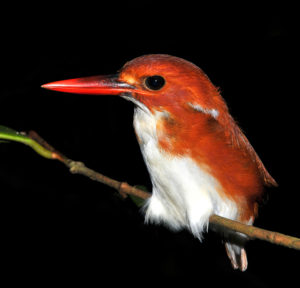
With regard to its diet, it is strangely atypical for its breed: It mainly feeds on frogs and insects, rarer small reptiles, and thus it does not rely on waters. That is why you can find it throughout the whole Madagascar: In savannahs, in dry forests as well as rainforests, on the coast, on islands and even in the highlands up to 1500 m elevation. Only the hot and dry south and southwest of Madagascar are excluded from the habitat, the pygmy-kingfisher cannot deal with these arid climates.
Pygmy-kingfishers search passively for food: Like so many kingfishers, they perch on branches watching the environment until they catch sight of possible prey. Then they nosedive to catch the prey with the beak and hit the prey on a branch until it is dead.
Up to date, two subspecies of the pygmy-kingfishers have been described: Corythornis madagascariensis madagascariensis, the common and everywhere occurring variant, and Corythornis madagascariensis dilutus. This subspecies is only known from Zombitse-Vohibasia national park. You can distinguish it from the other by it lacking violet feather margins. Due to its wide distribution, the pygmy-kingfisher is listed as least concern by IUCN. However, scientists have seen a decreasing trend in population for years, but it seems not to be critical until now. There exist no data about the exact numbers of breeding pairs of this species. The subspecies Corythornis madagascariensis dilutus is thought to be threatened by extinction or to be even already extinct because it is known only from the original description and has not been recorded since then.
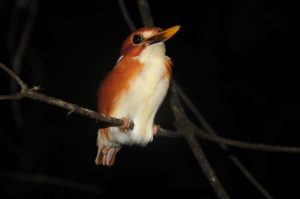
The breeding season of the pygmy-kingfisher begins with the rainy season in October and lasts until the beginning of the new year. If a pair wants to breed, they together build a long tube inside an earth bank. The diameter size only fits one animal at a time. This nesting tunnel has a length of about 20 to 30 cm and protects the nest from intrusive visitors such as lemurs, larger reptiles, or other birds. Only snakes and some smaller lizards are able to enter the tunnel and steal the eggs. Most egg deposition takes place in November and December – this way, the hatching young has the best conditions for being reared with a big variety of food. They pygmy kingfishers female lays four white eggs. From now on, the parents share work: Both brood, and in the meantime, the non-brooding parent can look for food. It is yet unclear when exactly the young hatch and how old they are when leaving the nesting tunnel for the first time. In general, there is very little scientific research done about pygmy-kingfisher. Genetic relationships to other kingfisher species are largely unclear, only a few things are known about mating and brooding behavior, and the hatchlings are almost completely unknown. So there is a lot left to research in these small kingfishers.
- Pictures, calls and videos in The Internet Bird Collection (IBC)
 MADAMAGAZINE Your Magazine about Madagascar
MADAMAGAZINE Your Magazine about Madagascar
